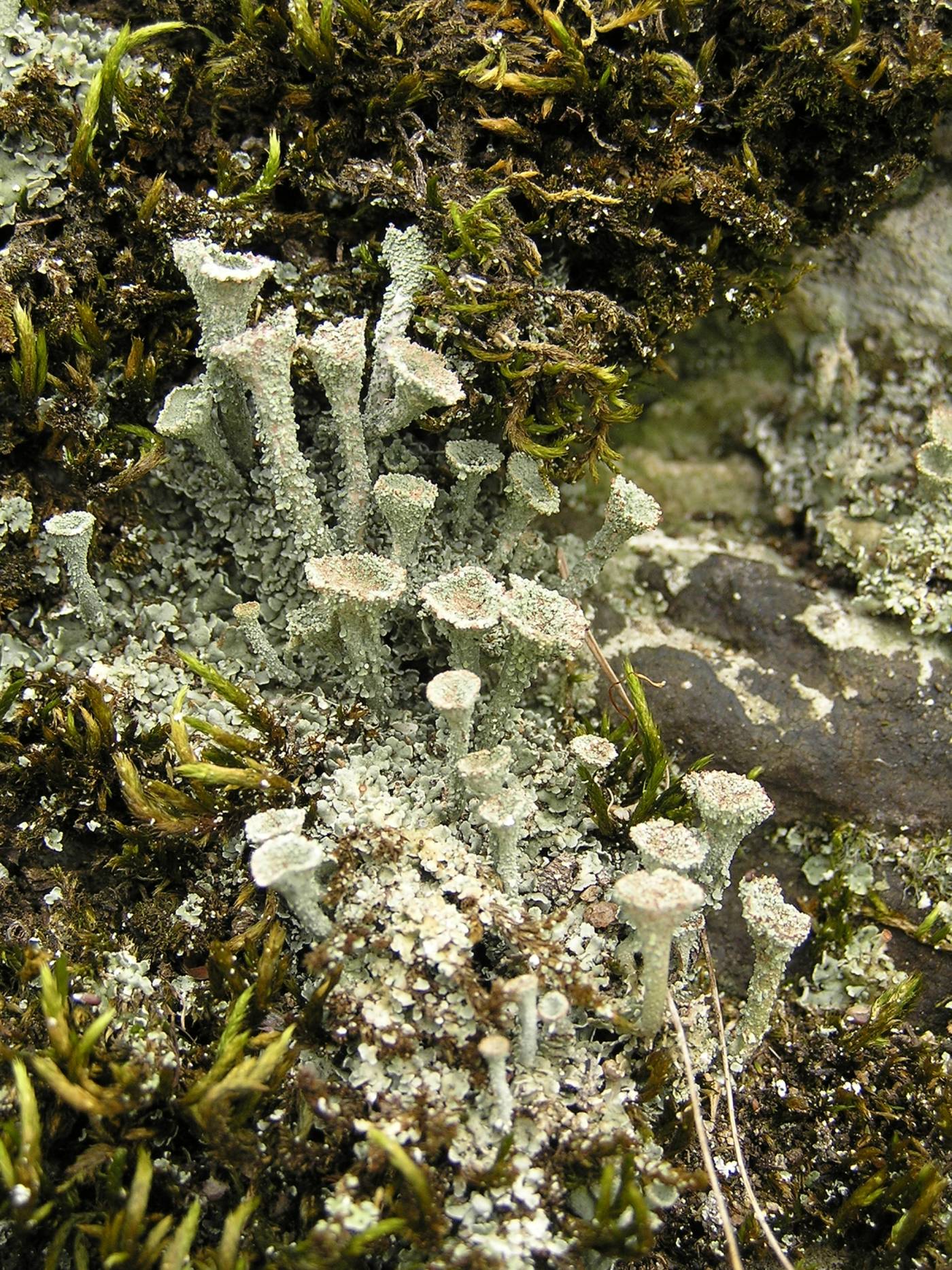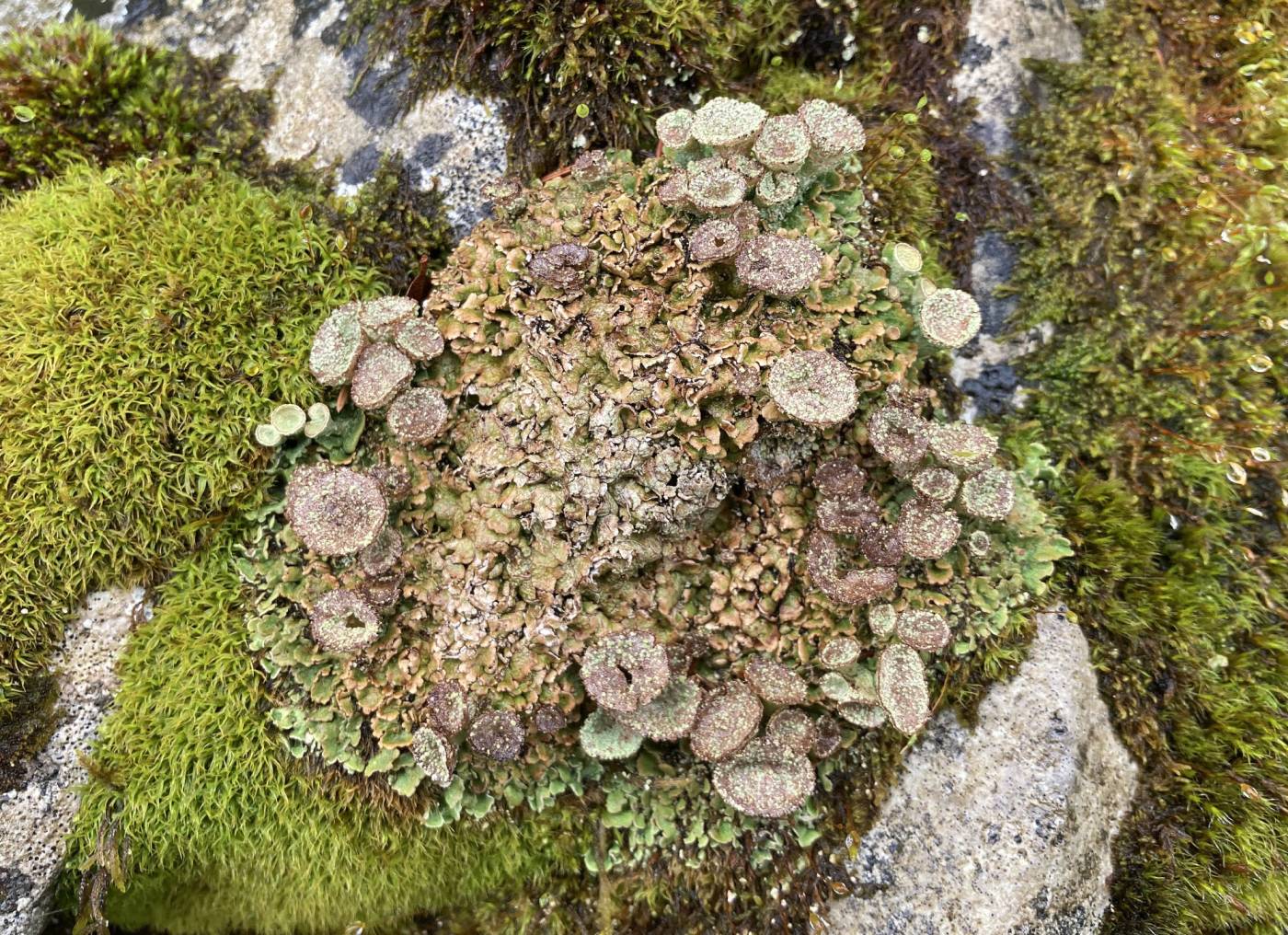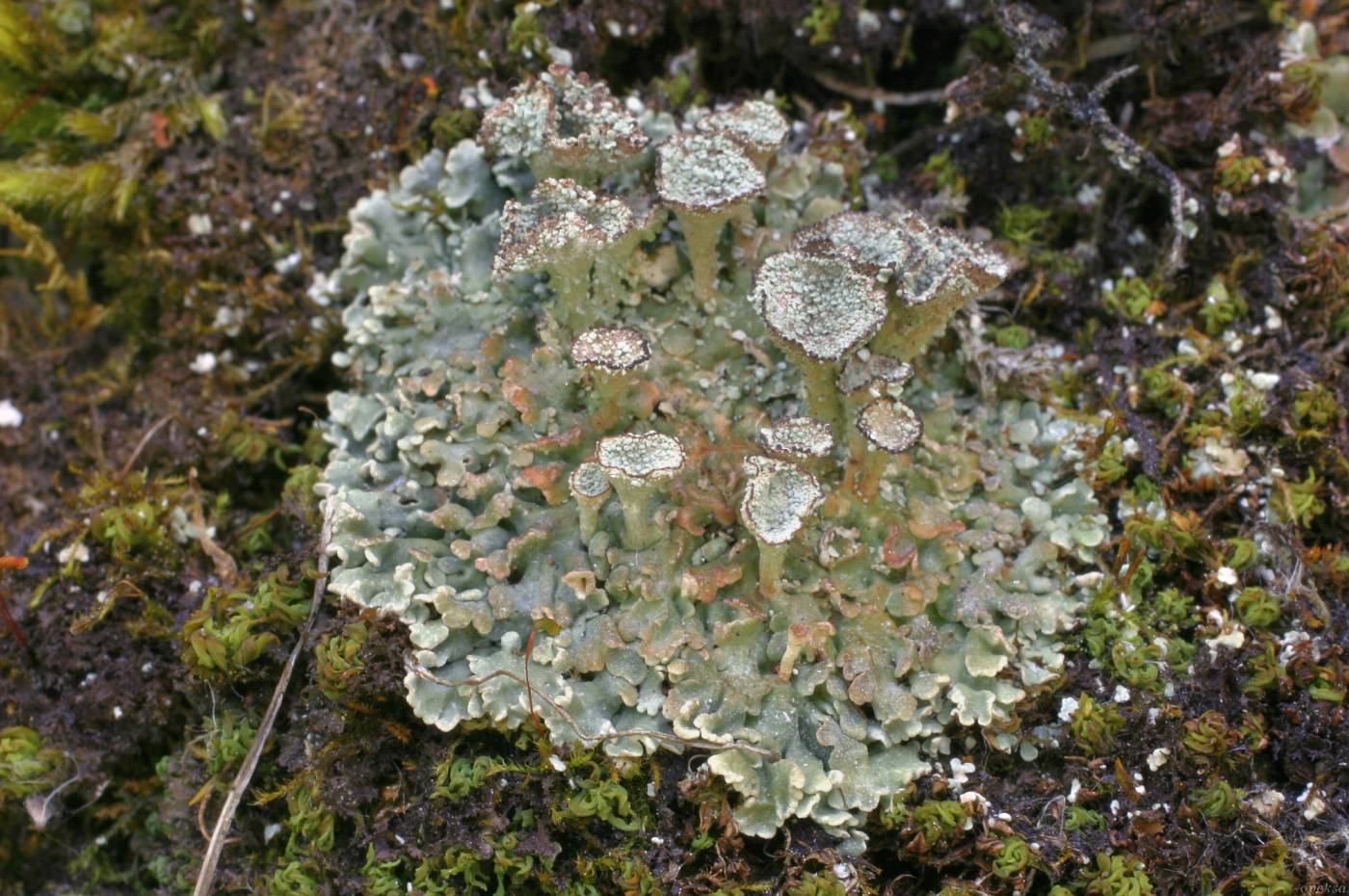Cladonia pocillum is characterized by wide scyphi covered by cortex, areoles, coarse granules or squamules. Currently, it is considered an ecotype of C. pyxidata on calcareous substrates from which it is distinguished by a conspicuous basal thallus composed of large squamules that form a compact rosette. Molecular data indicate more complex problems within the group (Ahti & Stenroos 2013), so the morphological-ecological concept of the two species is maintained.
In central Europe, it is one of the few Cladonia species associated with calcareous substrates, growing on soil, rock, or even bryophytes. It is typically found on limestone rocks, grasslands or concrete walls. The lichen grows from lowlands to high mountains and prefers well-lit sites. It is a cosmopolitan species, abundant all over Europe. In the Czech Republic, C. pocillum is among the dominant species in karst areas, but is also known from diabase, calcareous conglomerate, serpentinites and basic volcanic rocks.
Literature: Kotelko R. & Piercey-Normore M. D. (2010): Cladonia pyxidata and C. pocillum; genetic evidence to regard them as conspecific. – Mycologia 102: 534–545. Ahti T. & Stenroos S. (2013): Cladoniaceae. – In: Ahti T., Stenroos S. & Moberg R. [eds], Nordic Lichen Flora 5: 87–89.
taxonomic classification:Ascomycota → Lecanoromycetes → Lecanorales → Cladoniaceae → Cladonia
Red List (Liška & Palice 2010):LC – least concern
Occurrence in the Czech Republic
All records: 266, confirmed 84. One click on a selected square displays particular record(s), including their source(s).



